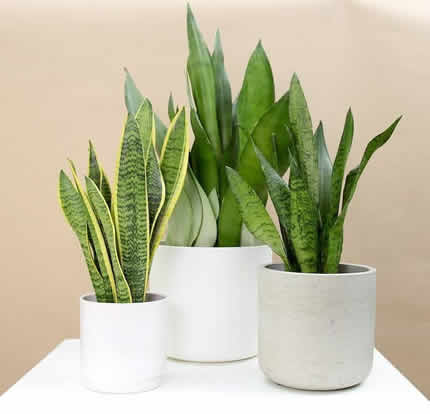Snake Plant vs Aloe Vera: Which Plant Wins in Air-Purifying Conditions?

Both the Snake Plant and Aloe Vera are staples in the world of indoor plants — known not just for their beauty, but for their air-cleansing properties. But when it comes to purifying your space, which one truly delivers the cleanest, healthiest air?
Let’s put them head-to-head.
Table of Contents
Air-Purifying Power
-
Snake Plant: Featured in NASA’s Clean Air Study, it removes toxins like formaldehyde, benzene, and xylene. It’s one of the few plants that releases oxygen at night — making it excellent for bedrooms.
-
Aloe Vera: Known to remove benzene and formaldehyde from the air. Also produces oxygen but primarily during the day.
💡 Verdict:
Both offer great purification, but the Snake Plant wins for its 24-hour oxygen cycle and broader toxin removal.
📘 Related reads:
→ Snake Plant – The Best Low-Light Plant for a Steamy Bathroom? It’s the Snake Plant
→ Aloe Vera – How Bedroom Aloe Vera Helps You Sleep Deeper and Breathe Better

Ease of Care
-
Snake Plant: Thrives on neglect. Water every 2–3 weeks. Tolerates low light, dry air, and rarely gets pests.
-
Aloe Vera: Low-maintenance but more sensitive to overwatering. Needs bright light and good drainage. It can suffer in dim, humid rooms.
💡 Verdict:
Snake Plant is hardier overall, especially in low-light or inconsistent-care homes.
Tools for success:
-
Snake Plant self-watering pot
Pet Safety
-
Snake Plant: Toxic to pets. If chewed, it can cause vomiting or lethargy in cats and dogs.
-
Aloe Vera: Also toxic to pets. Can lead to gastrointestinal upset if ingested.
💡 Verdict:
A tie — both are beautiful but not ideal for pet-accessible areas.
📘 Tip:
If you love both but have pets, try placing them on high stands or floating shelves out of reach.
Extra Benefits
-
Snake Plant: Reduces airborne allergens by trapping dust and pollen on its waxy leaves.
-
Aloe Vera: Offers a bonus — its gel can be harvested for minor skin burns and irritation.
💡 Verdict:
Aloe Vera brings functional value beyond air — perfect for skincare lovers or herbal households.
Aesthetic & Energy
-
Snake Plant: Tall, architectural, and bold. Makes a clean statement in modern or minimalist rooms.
-
Aloe Vera: Short, wide, and sculptural. Feels earthy, grounding, and a bit wild.
💡 Design Tip:
-
Use Snake Plants for height and structure — think entryways or corners.
-
Use Aloe Vera in windowsills, kitchens, or clustered with other succulents.
Featured pairings:

Best for Apartments, Offices, and Urban Homes
Both of these plants are low-maintenance, but their environmental preferences differ in important ways.
-
Snake Plant: Perfect for apartments with low light, forgetful care routines, and dry indoor air. Its vertical structure makes it ideal for tight corners or small spaces.
-
Aloe Vera: Better for homes with sunny windows or urban flats with lots of natural light. Great for kitchen counters, desks, or sunrooms.
💡 Verdict:
Go with Snake Plant if light is limited. Choose Aloe Vera if you’ve got sun and love plants with multitasking benefits.
Symbolism & Soul
These plants also carry symbolic energies that reflect their nature.
-
Snake Plant: Symbolizes protection, strength, and purification. Its upright form echoes confidence and energetic shielding — ideal for those craving clarity and boundaries.
-
Aloe Vera: Symbolizes healing, restoration, and resilience. It’s the plant of soft recovery — gentle and nourishing in both presence and use.
Your space will tell you which energy it wants to hold.
Who Should Choose Which?
Choose the Snake Plant if:
-
You want strong air-purifying benefits
-
You travel or forget to water
-
Your space is dim or dry
Choose the Aloe Vera if:
-
You want a healing, multi-use plant
-
Your home gets bright natural light
-
You prefer smaller, tabletop greenery
Other Comparisons You Might Like
Thanks for reading! I'm Michael — houseplant fanatic and your Pinterest plant guide.
Follow me on Pinterest for fresh updates 🌿



